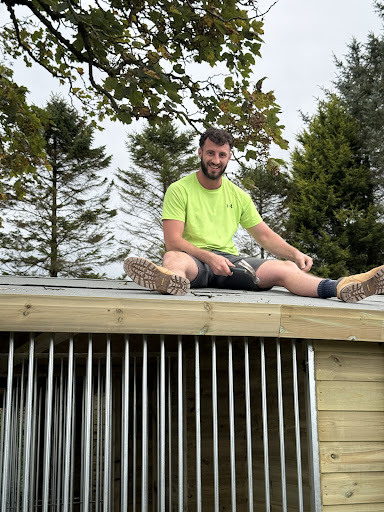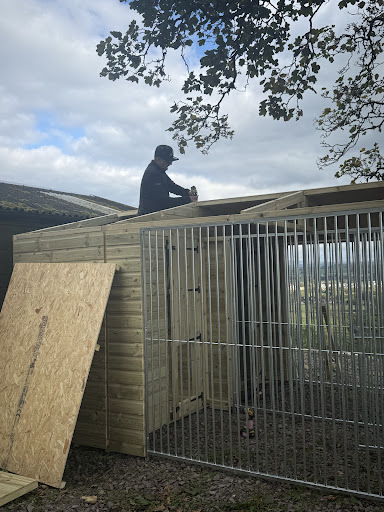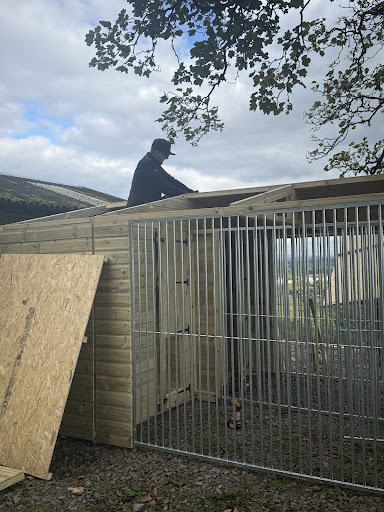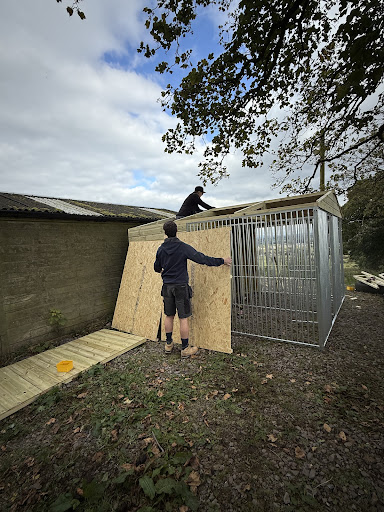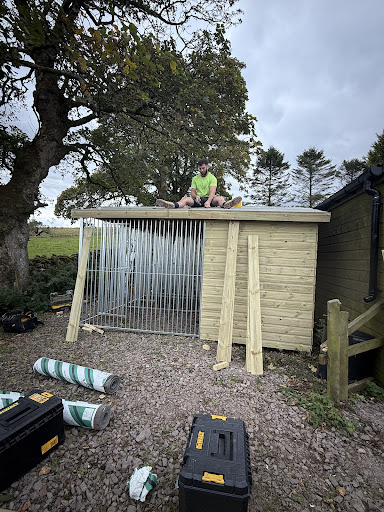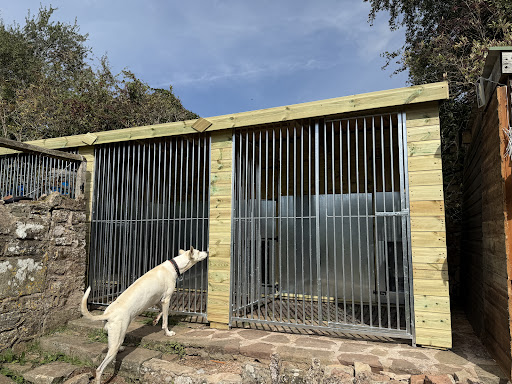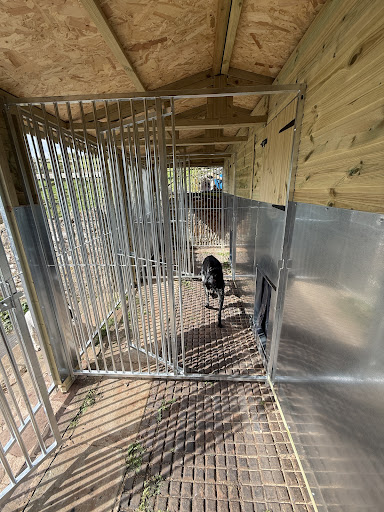If your dog refuses to sleep in their kennel, you’re not alone. According to a survey conducted by the American Kennel Club, 87% of dogs come to view their crate as a positive space within just three weeks of beginning the crate training process. Whether it’s a brand-new puppy or an older rescue, it’s common for dogs to feel unsure about stepping into a new space.
At first glance, a kennel might seem like the perfect solution: it’s safe, secure, and gives your dog their own space to rest. But if your dog won’t even go near it, you’re probably asking yourself, “Why will my dog not sleep in his kennel?”
In this guide, we’ll explore the most common reasons dogs avoid their kennels and share simple steps you can take to help your dog feel more comfortable and relaxed in their space.
How Do I Get My Dog To Use His Kennel?
Start slowly. Most dogs need a bit of time and reassurance to feel at home in a new space.
Dogs often like cosy areas, but not every dog instantly sees a kennel as a good place to rest. If your dog is avoiding it, they may feel uncomfortable, unsure, or just too far away from the people they trust.
Choose a quiet corner in your home where your dog can relax. Add some soft bedding, a familiar toy, and leave the door open so they can wander in when they’re ready.
Why Will My Dog Not Sleep in His Kennel?
Here are the most common reasons why your dog might not want to sleep in their kennel:
- Wrong size: A kennel that’s too small feels cramped. One that’s too large might feel cold or empty.
- Uncomfortable: If the kennel has a hard floor or no bedding, it might not feel like a good place to lie down.
- Separation worries: If your dog usually sleeps near you, being alone in a kennel can feel unsettling.
- No training: If the kennel hasn’t been introduced properly, your dog might see it as a place to avoid.
How Do I Get My Dog to Use His Kennel?
Outdoor kennels, or doghouses, work well for dogs that spend time in the garden. They give your dog shelter from the weather and a place to rest. But some dogs need help feeling at ease in a new setting.
Here’s how to make the kennel more inviting:
Check the Fit
When choosing a kennel, it’s important to ensure your dog can stand up, turn around, and lie down comfortably without bumping into the sides. Always focus on the internal dimensions of the kennel rather than relying solely on size labels, which can be misleading. To get the right fit, measure your dog or use their current bed or crate as a reference point.
Make It Comfy
A kennel should be a cosy space where your dog feels safe and relaxed. Add a soft dog bed, thick blanket, or pet mattress to create a warm and comfortable environment. Including a toy or an item of your clothing can offer extra reassurance through familiar scents. Remember to keep the bedding clean and dry at all times, particularly during colder months when moisture can build up.
Use Encouragement
Help your dog feel at ease with the kennel by turning it into a positive experience. Toss treats inside so they can investigate at their own pace, and consider feeding their meals near or just inside the entrance. Spend time playing around the kennel to make it feel like part of their normal environment. Always use a light, cheerful tone to reinforce positive associations.
Let Them Explore
Never force your dog into the kennel. Keep the door open and allow them to approach, sniff, and enter on their own terms. Encourage small steps, such as sniffing the doorway or placing a paw inside, and reward these moments with praise. Sitting quietly nearby while your dog explores can also provide a sense of safety and support as they build confidence.
Can I Keep My Dog in a Kennel Outside?
Yes, but it depends on your dog. Small breeds, thin-coated dogs, and older pets may not stay warm enough outdoors overnight.
If your dog spends time in the garden during the day, a kennel gives them a place to rest and stay dry. Just make sure the kennel is well made, has shelter from the wind and rain, and is placed somewhere quiet and safe.
Some dogs will always prefer sleeping indoors, so watch your dog’s behaviour and go with what works best for them.
How to Crate Train Your Puppy
Crate training can help your puppy feel calm and settled. Here’s a simple plan to follow:
- Let them explore the crate on their own using treats and praise.
- Feed them inside the crate to build positive associations.
- Close the door for short periods once they’re comfortable.
- Stay nearby at first so they don’t feel alone.
- Never use the crate as a punishment.
The Sleepy Time Intro Method
This method is ideal for dogs who relax more easily when they’re already tired. Start by placing a soft blanket and a treat inside the kennel. After a walk or meal, when your dog is naturally more settled, gently guide them into the kennel. Once they lie down, close the door calmly and allow them to rest. When they wake up, open the door and offer praise along with a small reward for their calm behaviour. This builds a positive and restful association with the kennel.
The Start Tired Method
Designed for high-energy dogs, this approach uses physical activity to support kennel training. Begin with a walk or an active play session to burn off excess energy. Ensure your dog has had a toilet break before placing a treat inside the kennel and guiding them in. Close the door for a brief period, gradually increasing the time as they become more comfortable. Always praise your dog when they exit the kennel calmly to reinforce the relaxed behaviour.
The Go Slow Method
Perfect for dogs that are anxious or cautious, this gentle method focuses on building trust. Keep the kennel door open so your dog can explore it at their own pace. Sit nearby and offer treats as encouragement, using a soft, reassuring tone. When your dog starts to show interest and begins using the kennel voluntarily, move it to their usual sleeping area. Patience is key, allow your dog to take the lead, progressing slowly and steadily to ensure lasting comfort and confidence.
Benefits of Crate Training
Crate and kennel training can help with more than just sleep. It also:
- Helps with toilet training by encouraging control.
- Gives your dog a calm place to rest during the day.
- Protects your home when you’re out.
- Makes travel and vet visits easier.
Help Your Puppy Sleep Through the Night
Most puppies won’t sleep through the night straight away. These tips can help:
- Give them plenty of play and movement during the day.
- Offer a toy or puzzle before bedtime to settle them.
- Take them to the toilet before bed.
- Keep the crate near your bed so they feel close.
- Stick to a routine so they know what to expect.
A Final Word from Benchmark Kennels
In conclusion, if you’re asking “why will my dog not sleep in his kennel?”, it often comes down to comfort, size, training and how confident your dog feels. Some dogs adjust quickly, while others need gentle encouragement and time to build trust.
Use calm training, positive routines and simple comforts to help your dog feel at ease. With time and consistency, most dogs will learn to feel safe and relaxed in their kennel.
If you’re looking for a quality outdoor kennel that suits your dog’s needs, Benchmark Kennels offers reliable, well-built options to help your dog feel right at home. Get in touch today to find the right fit.
Frequently Asked Questions
How long does it take to train a dog to sleep in a kennel?
It depends on the dog. Some get used to it within a few days, others may need a few weeks. Keep the routine consistent and be patient.
Is it unkind to put my dog in a kennel at night?
Not if the space is cosy, safe and introduced properly. Most dogs will enjoy having their own space.
What if my dog cries in the kennel?
If it’s just fussing, try not to respond straight away. If they’re very distressed, go back a step in training.
Can my dog sleep outside in their kennel?
Some dogs can if the weather is mild and the kennel is suitable. Smaller, older, or thinner-coated dogs may be better indoors.
Can older dogs learn to sleep in a kennel?
Yes, older dogs can learn with a bit of time and patience. Use the same gentle steps and take it slowly.













